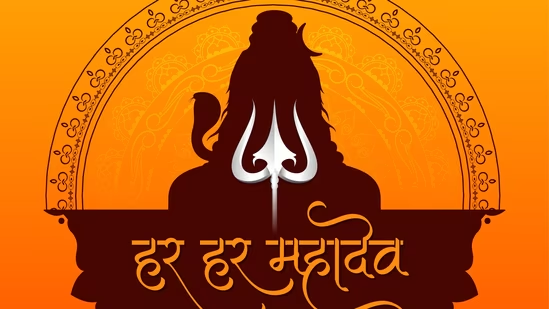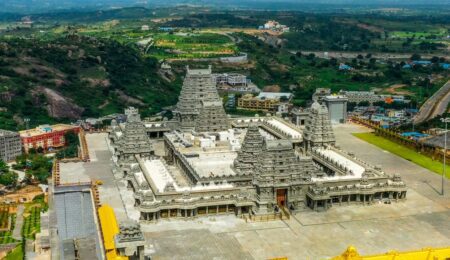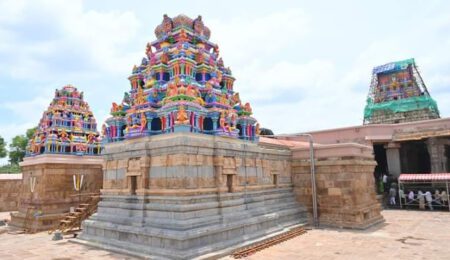Shravan Month 2025: Dates, Fasting Rules, Shiva Puja & Significance
Introduction to Shravan Month
When I first heard about Shravan Month, the energy and devotion it brings across India instantly fascinated me. Shravan (also spelled Sawan) is one of the most auspicious months in the Hindu lunar calendar, observed with great reverence and enthusiasm. Falling right in the heart of the monsoon, the month is dedicated to Lord Shiva, the supreme deity known as the destroyer and regenerator. Everything about Shravan overflows with devotion, myth, and community connection, making it a period like no other in the year.
Shravan Month 2025 Calendar and Key Dates
Shravan Month in 2025 begins on July 11 and concludes on August 10, though these dates can vary based on regional traditions and the type of lunar calendar followed (Purnimant or Amavasyant). For millions of devotees, Mondays, or Shravan Somvar, take center stage due to their unique spiritual energy, with each Monday seen as a special day to appease Lord Shiva. Here’s a breakdown of the key dates:
- Shravan Start Date (2025): July 11
- Shravan End Date (2025): August 10
- Shravan Somvar (Mondays):
- First Somvar: July 14
- Second Somvar: July 21
- Third Somvar: July 28
- Fourth Somvar: August 4
- Shravan Purnima (Full Moon): August 10
- Amavasya (New Moon): July 25
These dates can shift by a day or so depending on whether you follow the North Indian, South Indian, or Western Indian calendar, so always check with your local temple. In Maharashtra and Gujarat, Shravan often follows the Amavasyant calculation, while North Indian states prefer the Purnimant system.
Mythological Stories and Legends
Lord Shiva and Shravan
My favorite part about Shravan is definitely the mythological richness. Legend says that Shravan marks the time when Lord Shiva drank the deadly poison (halahala) that emerged during Samudra Manthan the great churning of the cosmic ocean by gods and demons to save the world from destruction. This act bestowed upon Shiva his title Nilkantha or the blue-throated one, making the entire month perfect for his worship.
Samudra Manthan
During Samudra Manthan, the ocean was churned for the nectar of immortality. Every being in the cosmic hierarchy, including Lord Vishnu, participated in this immense event. Shravan is thus associated with themes of sacrifice, hard work, and transcendence.
The Story of Shravan Kumar
Another heart-touching legend is about Shravan Kumar, a devoted son who embodiment filial piety. His unwavering love and sacrifice for his blind parents serve as a role model for millions and lend the month its name.
Importance of Shravan Month in Hinduism
Shravan is a spiritual goldmine. It’s when the spiritual energy in the atmosphere is at its highest, making it the prime time for engaging deeply in prayers, meditation, and rituals. Shiva devotees observe fasts, offer water (jalabhishek) and sacred leaves of the bilva tree, chant mantras like ‘Om Namah Shivaya,’ and keep their actions pure. The entire social fabric echoes with community pujas, bhajans, and traditional narratives—strengthening family and community bonds.
Shravan Fasting Rules and Guidelines
Who Should Fast?
Anyone wishing to strengthen their spiritual practices, seek health, or fulfill heartfelt wishes can observe Shravan fasts, but it holds special importance for married and unmarried women wishing for marital bliss, men for inner strength, and students for concentration.
Types of Shravan Fasts
- Full Day Fasting: Only water or fruits till after sunset
- Partial Fasting: Eating only once a day, usually after evening prayers
- Milk-Only Fasting: Consuming just milk, fruits, and nuts
Women, especially in North India, tie sacred threads and fast on Mondays for the well-being of their families and spouses.
What to Eat and Avoid
Permitted foods: milk, fruits, dry fruits, sabudana (tapioca), kuttu (buckwheat), singhara (water chestnut), and potatoes.
Forbidden foods: grains, rice, pulses, common salt, non-vegetarian items, spicy or fried foods.
Dos and Don’ts
- Do chant ‘Om Namah Shivaya’ or Maha Mrityunjaya mantra.
- Don’t lose your temper or engage in negative habits.
- Do visit temples (physically or virtually).
- Don’t break your fast suddenly; ease into regular food.
Rituals and Observances
Performing puja at home or in temples is the core ritual. A typical Shravan Monday puja involves:
- Cleansing the puja area and bathing early
- Offering Ganga jal, milk, or honey to the Shiva Linga
- Placing bilva (bael) leaves, raw rice, sandalwood, and white flowers
- Lighting oil lamps and incense
- Reciting Shiva Sahasranama or Rudri Path
- Performing Rudrabhishek—a sacred bathing of the Shiva Linga, often accompanied by chanting
- Visiting Shiva temples, especially on Mondays
- Observing Subh Muhurat for starting new spiritual practices
Regional Observances
Shravan celebrations are as diverse as India herself!
- Maharashtra: Shravan Mondays, or Mangala Gaur for married women, are vibrant with songs and games.
- Gujarat: Grand processions during the month and Kanwar Yatras.
- North India: Kanwariyas (Shiva devotees) carry holy river water to offer at distant temples.
- Nepal: Shiva shrines like Pashupatinath explode with activity; huge fairs and collective fasts are common.
Scientific and Seasonal Context
Shravan aligns with the monsoon season, symbolizing renewal and spiritual cleansing. Ayurveda notes this as a time of lower digestive fire, supporting lighter fasting diets. The rains clean the environment, while spiritual practices purify our inner world—a charming alignment of nature and tradition.
Modern Relevance
Even in urban and digital times, Shravan continues to draw people together. Live-streamed temple events, online group chants, and socially conscious fasting (healthy food drives, plastic-free yatras) are giving ancient practices a fresh twist. It’s a period of reconnecting with our roots while embracing technology and innovation.
Conclusion
Shravan Month 2025 promises to be a spiritually rich, health-conscious, and socially vibrant period. Whether you observe strict fasting or just pause to reflect, tapping into the month’s high energy can be truly transformative. Shravan calls on us to look inwards, build discipline, and experience the sublime union with the divine.
Frequently Asked Questions (FAQs)
1. What is the date of Shravan Month 2025?
Shravan in 2025 starts on July 11 and ends on August 10.
2. Why is Shravan important for Lord Shiva devotees?
It’s considered especially auspicious for worshipping Lord Shiva due to legendary events like Samudra Manthan and Shiva’s role as the savior of the universe.
3. What can I eat during Shravan Somvar fasting?
Allowed foods include milk, fruits, sabudana, kuttu, and potatoes. Avoid grains, pulses, and regular salt.
4. How do different regions celebrate Shravan?
Each state brings unique colors: Maharashtra’s Mangala Gaur, Gujarat’s kanwar yatras, North India’s river pilgrimages, and Nepal’s Pashupatinath festivals.
5. Can I observe Shravan fasts with a busy work schedule?
Absolutely! You can follow partial fasting, digital pujas, or mindful meditations if temple visits are tough.
6. Does Shravan connect with the monsoon season?
Yes! Both symbolize renewal. Ayurveda also promotes lighter, monsoon-friendly diets during this time.




Leave a Comment